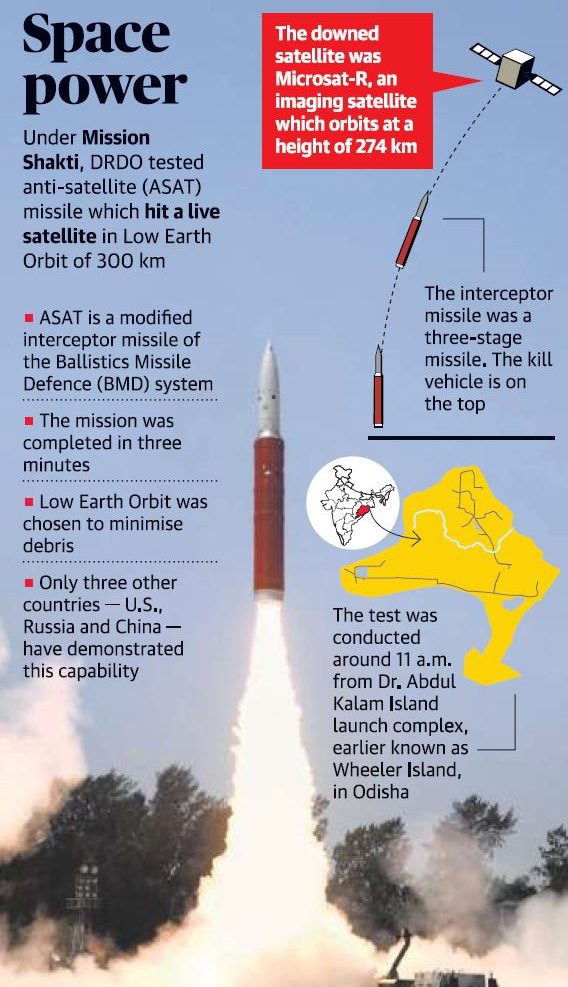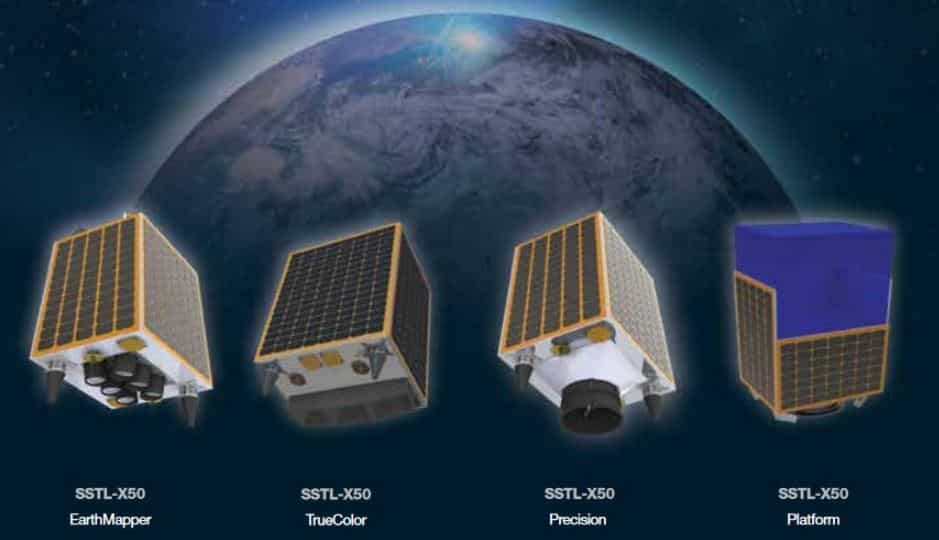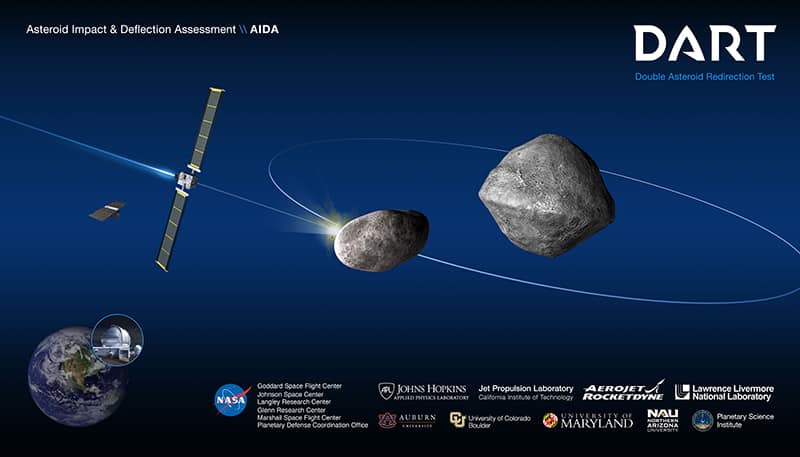Table of Contents
About Mission Shakti| ISRO and DRDO | UPSC – IAS
On March 27, India carried out an anti satellite (ASAT) test using an interceptor missile (as a kinetic kill vehicle) to neutralise a target satellite (possibly the Microsat-R launched in January this year) in a Low Earth Orbit (LEO) at an altitude of around 300 km. While India is the fourth country (after the U.S., Russia/USSR and China) to acquire this capability.
Test Conducted – from the Dr. APJ Abdul Kalam Island (earlier, known as Wheeler Island) in Odisha launch complex. Defence Research and Development Organisation (DRDO) successfully carried out the test of an anti-satellite missile by bringing down one of its satellites in the low earth orbit 300 kilometers from the Earth’s surface.
- This was a technological mission carried out by DRDO. The satellite used in the mission was one of India’s existing satellites operating in lower orbit DRDO’s (Ballistic Missile Defence interceptor was used in this mission).
- The mission was fully successful and achieved all parameters as per plans. The test required an extremely high degree of precision and technical capability.
- The interceptor missile was a three-stage missile with two solid rocket boosters. Tracking data from range sensors has confirmed that the mission met all its objectives.
Significance of Mission Shakti – India’s Anti-Satellite Missile
With this India joins a select group of nations, India joins an exclusive group of space faring nations consisting of USA, Russia and China. which have such capability. The test has once again proven the capability of indigenous weapon systems.
An ASAT capability is normally a part of a Ballistic Missile Defence (BMD) programme. While a BMD targets an incoming ballistic missile, an ASAT interceptor targets a hostile satellite. Since a satellite moves in a precise orbit which is tracked, it gives greater time for target acquisition though satellites in higher orbits pose greater challenges for the kill vehicle.
- The capability achieved through the Anti-Satellite missile test provides credible deterrence against threats to our growing space-based assets from long range missiles, and proliferation in the types and numbers of missiles.
- The display of technological prowess through the test accentuates the military dimension and brings into play an overwhelming assurance of what the Ministry of External Affairs describes as a ‘credible deterrence’ against attacks on India’s growing number of space assets.
- The test has demonstrated the Nation’s capability to defend its assets in outer space.
- It is a vindication of the strength and robust nature of DRDO’s programmes.
- India has tested and successfully demonstrated its capability to interdict and intercept a satellite in outer space based on complete indigenous technology.
- India’s space programme is a critical backbone of India’s security, economic and social infrastructure.
- International efforts to reinforce the safety and security of space based assets.
- This is a technology where we have developed capability. Space technologies are constantly evolving. We have used the technology that is appropriate to achieve the objectives set out in this mission.
Does the test create space debris? | ISRO | DRDO | UPSC – IAS
Satellites in the Space – Since the Sputnik was launched in 1957, more than 8,000 satellites/man-made orbiting objects have been launched, of which about 5,000 remain in orbit; more than half are nonfunctional. Currently, more than 50 countries own/operate the nearly 2,000 functional satellites in orbit.
The U.S. accounts for more than 800 of these, followed by China (approximately 280), Russia (approximately 150). India has an estimated 50 satellites. Of these 2,000 satellites, over 300 are dedicated military satellites.
- The Mission Shakti test was done in the lower atmosphere to ensure that there is no space debris. Whatever debris that is generated will decay and fall back onto the earth within weeks.
- The debris created by the Mission Shakti test , which was undertaken at a low altitude, is expected to dissipate much faster.
Violation of International treaty
To prevent the militarisation of space so that it is preserved “as the common heritage of mankind”. The 1967 Outer Space Treaty followed by the 1979 Moon Treaty laid the foundations of the legal regime for space i.e:-
- Rule of law,
- Refraining from appropriating territory,
- Non placement of any weapons of mass destruction in space, and
- Prohibition of military activities on the moon and other celestial bodies.
India’s test (Mission Shakti) has not violated any norm as there is no international treaty prohibiting the testing or the development of ASATs.
——————————————————————————————-
Mains Questions for practice | UPSC – IAS
Topic – Mission Shakti – India’s Anti-Satellite Missile
Question 1 – In the absence of a credible threat to India’s space assets from China or any other country with Anti Satellite missile capabilities, whether the ‘deterrence’ sought to be achieved by this test would lead to a more stable strategic security environment ?
Question 2 – Will the Mission Shakti test spur space weaponization ?
Question 3 – Is India entering into an arms race in outer space ?
Question 4 – What is the international law on weapons in outer space?













Is there zero debris or retain some debris??
There would be some debris generated…. which will decay and fall back onto the earth within weeks…
literally not be zero…but almost zero.
Nice write up